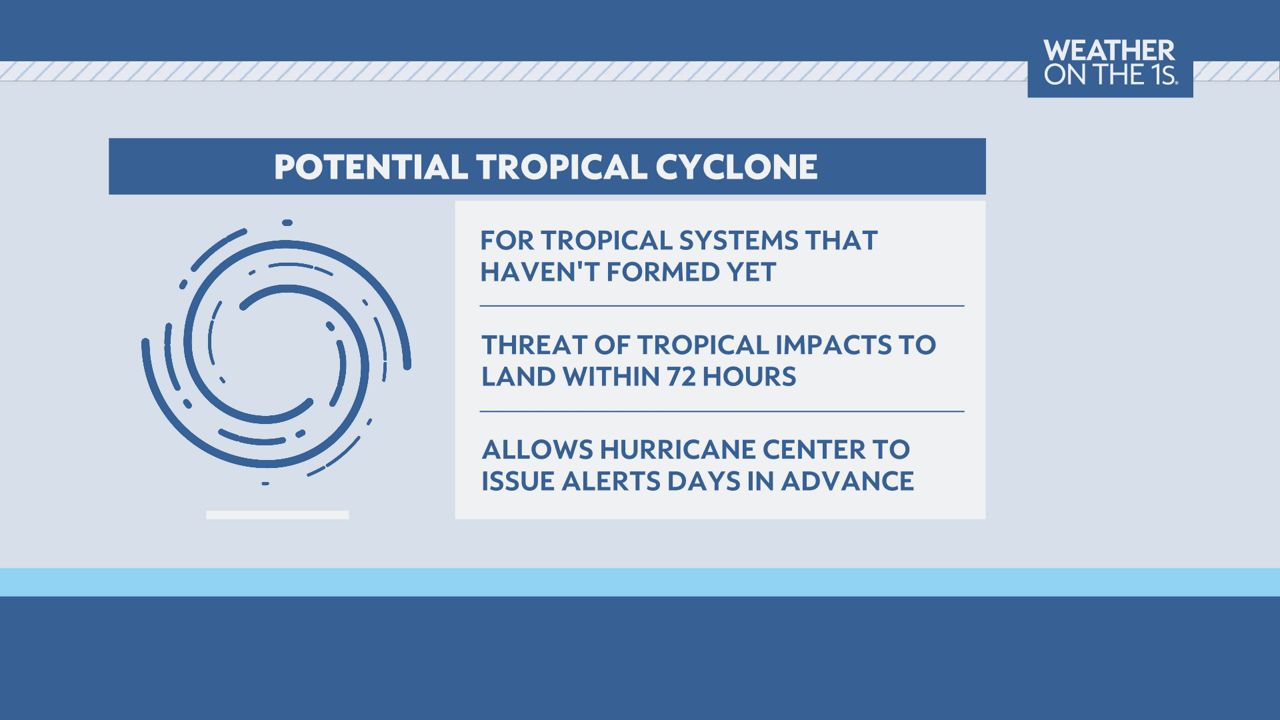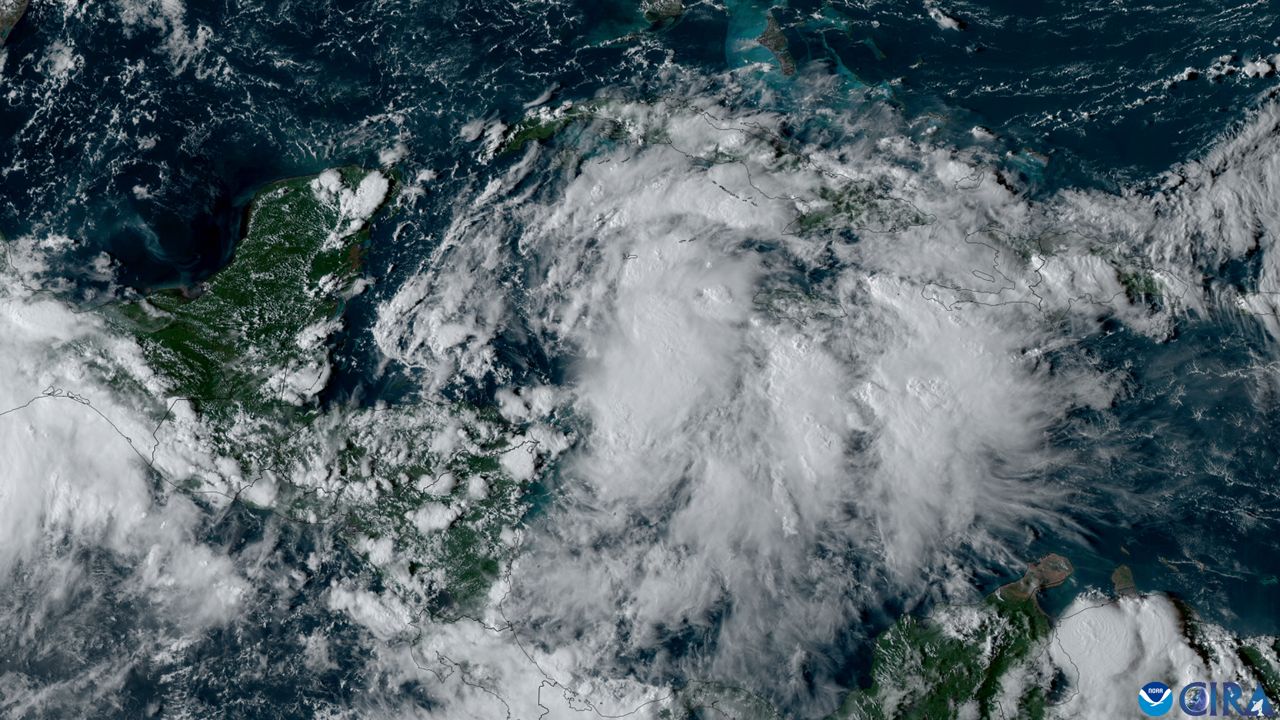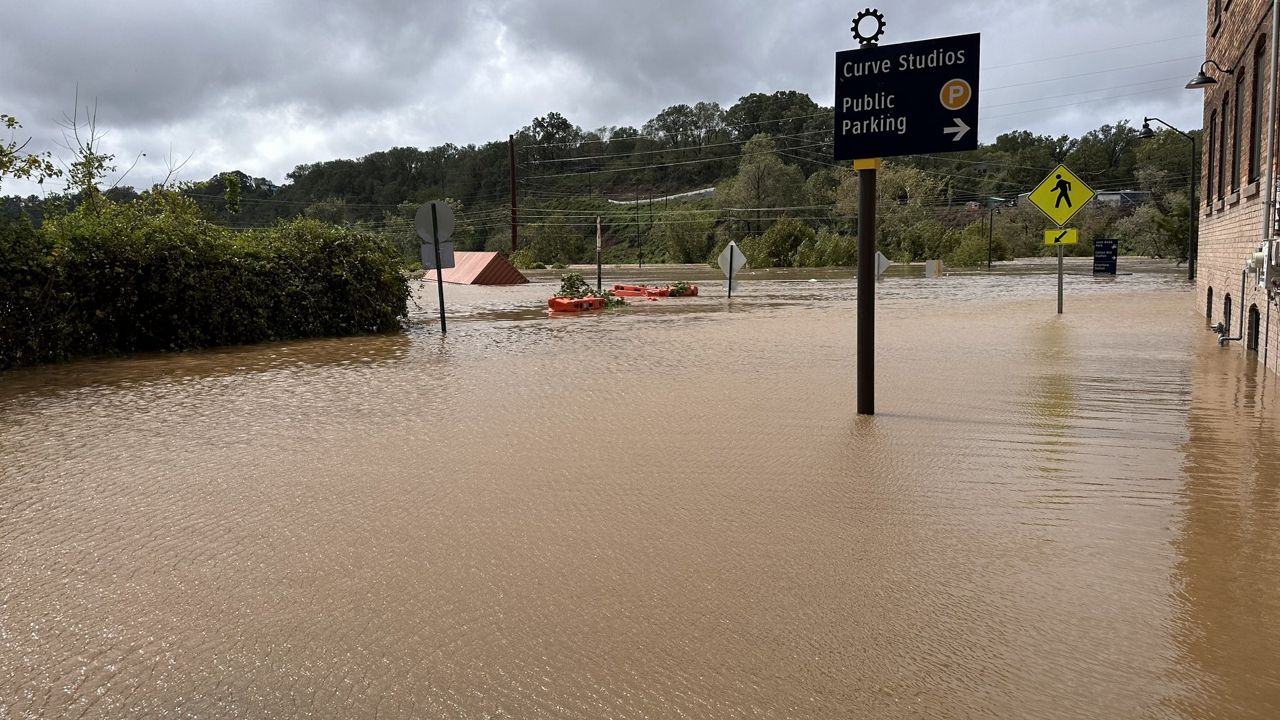The National Hurricane Center(NHC) is changing an impactful tropical product heading into the 2025 hurricane season.
What You Need To Know
- Potential Tropical Cyclone forecasts increased to 72 hours out
- The National Hurricane Center begain issuing PTCs in 2017
- PTCs allow NHC to issue alerts before anything forms
Since 2017, the NHC has used potential tropical cyclone (PTC) forecasts to alert the public of threats before a storm has even formed. Beginning this hurricane season, they can alert the public up to 72 hours out, which is 24 hours greater than before.

Previously, the NHC and National Weather Service (NWS) could not issue any watches, warnings or advisories until a tropical cyclone had formed. That is where the (PTC) comes in.
“We’ve used the potential tropical cyclone advisories a lot over the last six to seven years,” said NHC Director Dr. Michael Brennan. “It’s given us almost an extra day’s worth of lead time in terms of getting watches and warnings out, so we’ve seen the benefit of these potential tropical cyclone advisories.”
Dr. Brennan points to the improvement in forecasting skill in the last half decade to allow them to issue PTCs from farther out.
“We feel confident in our ability to do this when it comes to forecasting and what we’ve seen with the benefits.”
Dr. Brennan says they will not issue PTC alerts for every storm, they will likely be reserved for the higher end storms that threaten land. He referenced Helene as a good example of this, with the powerful storm forming in days before hitting Florida in 2024.

“We’re trying to find the right balance between giving people more information at a longer lead time, but balancing that with the increased uncertainty that can be there for a system that hasn’t really fully taken shape yet.”
Ultimately, the NHC says the PTC has been a success, given the extra time it’s allowed states to prepare and people to be aware of any threatening storms.
Last year the NHC introduced inland watches and warnings to their cone of uncertainty maps. This was added to battle common misconceptions about the cone since it does not show how far impacts can be away from the center of a storm.
We saw this with Hurricane Helene last year when devastating flooding occurred well inland into Georgia and the Carolinas.
With months to go until the start of the 2025 hurricane season, the NHC wants people to prepare now.
“You have to get ready every year and know your risk.” Dr. Brennan says. “We have a lot of people moving to hurricane prone locations every year, people who aren’t familiar with hurricane risks and hurricane hazards, so familiarize yourself.”
Seasonal forecasts for the upcoming hurricane season will begin being released in April. Colorado State will release theirs in early April with NOAA’s forecast coming out in May.
Here's a breakdown of the 2024 Atlantic Hurricane Season.
Our team of meteorologists dives deep into the science of weather and breaks down timely weather data and information. To view more weather and climate stories, check out our weather blogs section.






